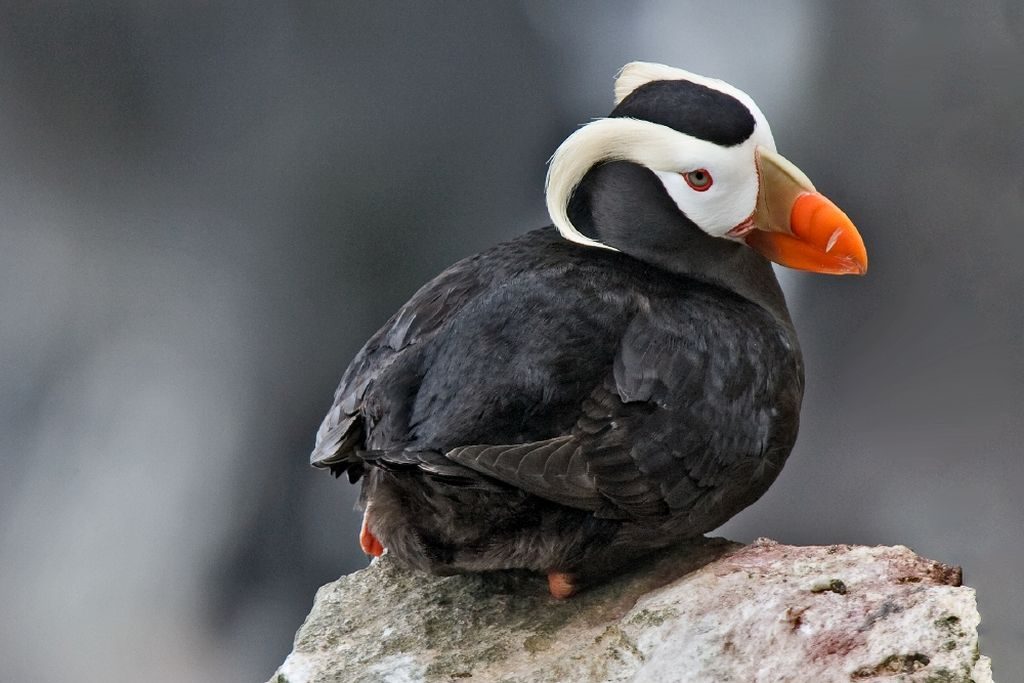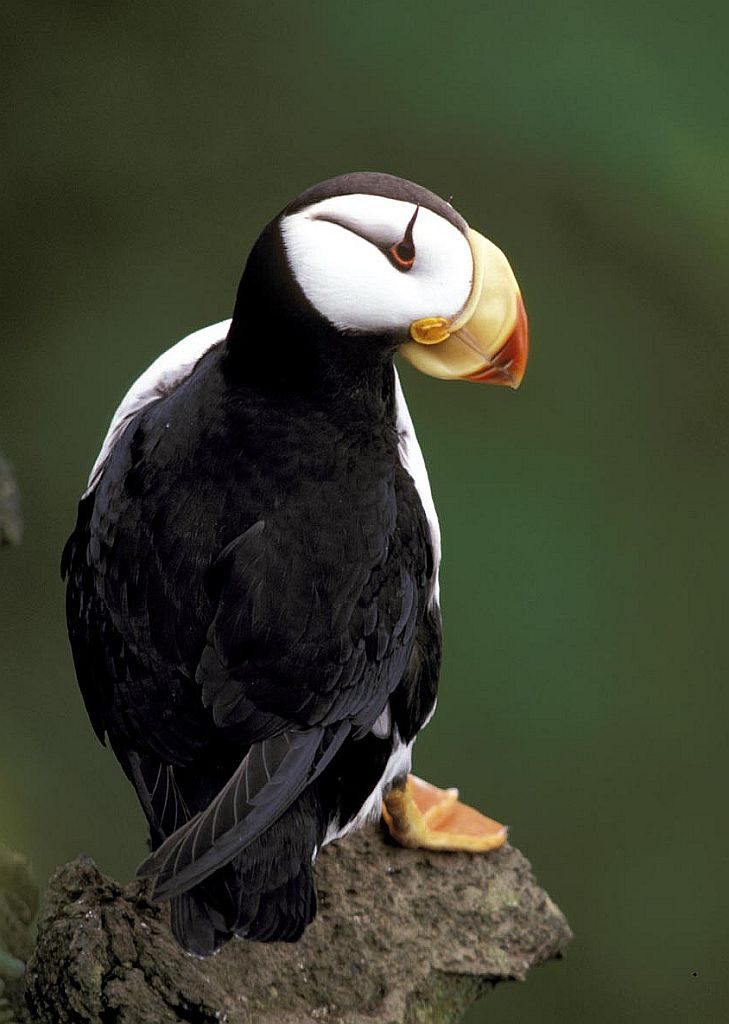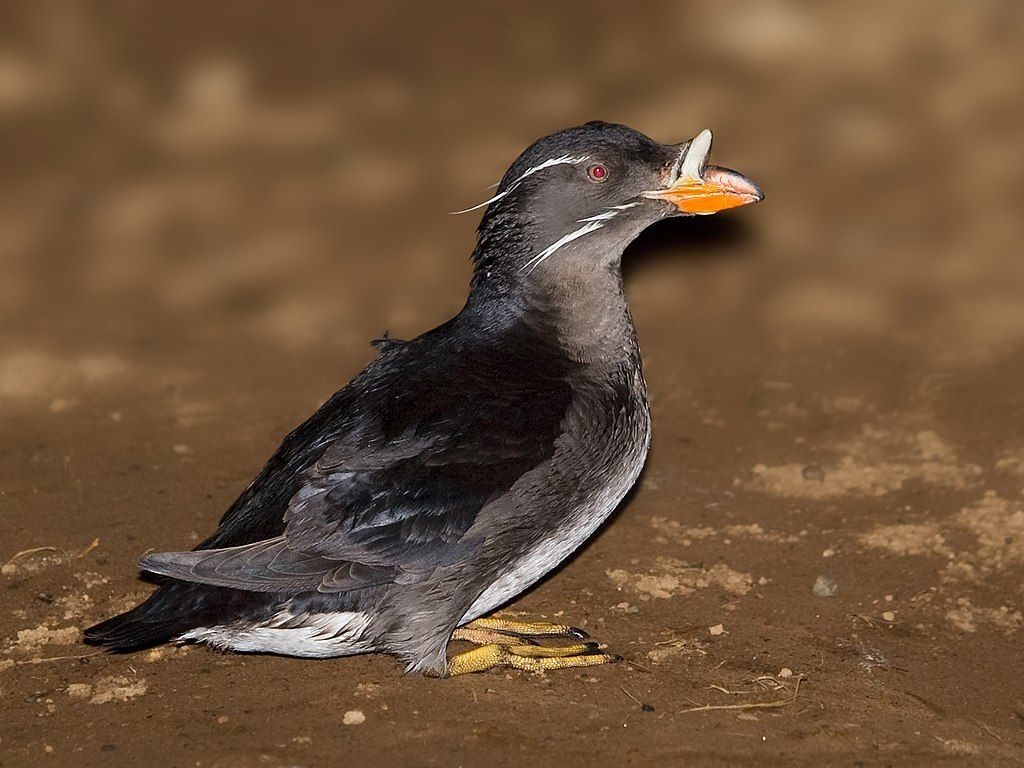
Alaska Birding with PIB: Pelagic tour at Kenai Fjords National Park 19 June 2019
Last summer I went to Newfoundland to see the only puffin we ever think about in eastern North America, the Atlantic puffin (Fratercula arctica). In the Pacific there are two more puffins and a closely related bird that’s like a unicorn. Today I hope to see all three.
Atlantic or Pacific, the first thing to know about puffins is that all of them are pelagic. They spend most of their lives far out at sea and only come to land in the breeding season when they look their very best. If you want to see a puffin you have to visit their homes in early summer. Otherwise they’re gone.
The tufted puffin (Fratercula cirrhata) is the largest of them, more powerful than cute. Almost double the weight of the Atlantic puffin, his breeding plumage includes a bright orange beak, white face, and long golden head plumes. His extensive breeding range makes him relatively easy to find on coasts and islands from California to Japan. At their breeding colonies each pair digs a burrow up to five feet deep where they raise a single chick per year.
The horned puffin (Fratercula corniculata), below, resembles the Atlantic puffin but he’s 40% larger, has a mostly yellow beak, and feather “eyebrows” like horns. There’s no danger you’ll mix them up in the wild. The horned puffin is only in the Pacific, the Atlantic puffin is only in the Atlantic.

The horned puffin also differs in his nesting strategy. These pairs don’t burrow to make a nest. Instead the female lays her single egg on scree in a rock crevice or on a cliff. Horned puffin breeding colonies range from (rarely) British Columbia to Alaska to the Sea of Okhotsk (Russia and Japan).
And finally there’s the unicorn.
The rhinoceros auklet (Cerorhinca monocerata) is not an auklet at all but the closest relative of puffins. Slightly larger than an Atlantic puffin he has a large orange bill with a single horn protruding from it, leading some to call him the unicorn puffin.

The rhinoceros auklet nests on offshore islands from California to the Gulf of Alaska to Korea and Japan. You’ll see them on the water during the day but not on land. Instead they fly home at night with fish to feed their chicks. As they arrive at the nesting colonies they run the gauntlet of gulls waiting to steal their food (see video below). Perhaps that’s why they come home only at night.
The unicorn has a different lifestyle but he’s a puffin nonetheless.
(photos from Wikimedia Commons; click on the captions to see the originals)
Oh my! That video was stressful!